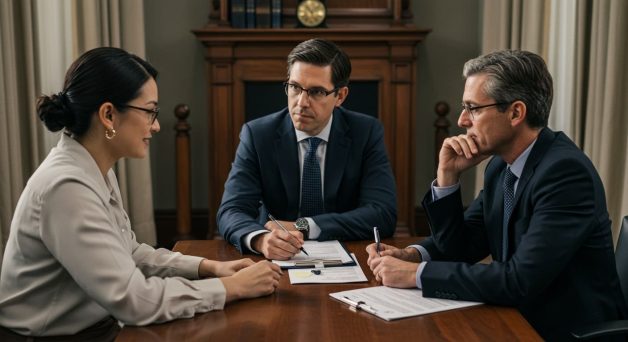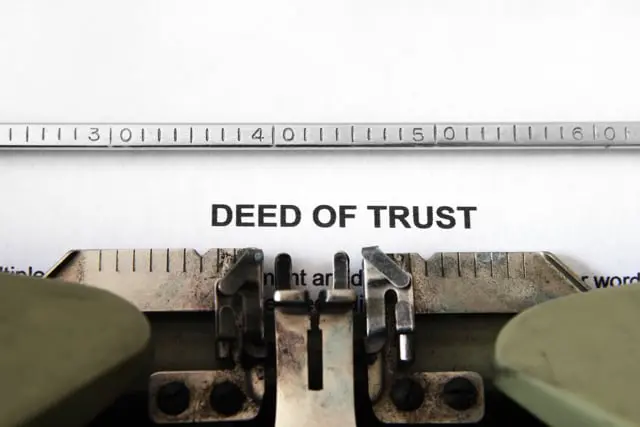El paisaje de mass tort litigation is undergoing a profound transformation as new technologies reshape the legal industry. These technological advancements are revolutionizing how attorneys approach complex cases involving numerous plaintiffs, streamlining processes, and enhancing the efficiency of case management. The evolution of mass torts in response to these innovations is reshaping the practice of law and redefining the boundaries of what is possible in large-scale litigation.
One of the most significant developments in mass tort litigation is the increasing use of artificial intelligence (AI) and aprendizaje automático algorithms to analyze vast amounts of data. These technologies are enabling legal teams to sift through millions of documents, identify relevant information, and uncover patterns that might otherwise go unnoticed. The application of AI in document review has dramatically reduced the time and resources required to process discovery materials, allowing attorneys to focus on higher-level strategic decisions.
The advent of predictive coding has been particularly transformative in the realm of mass torts. This technology uses machine learning algorithms to identify relevant documents based on a sample set reviewed by human attorneys. As the algorithm learns from human input, it becomes increasingly accurate in identifying pertinent information. Courts have increasingly recognized the validity of predictive coding, with landmark decisions such as Da Silva Moore v. Publicis Groupe paving the way for its widespread adoption in electronic discovery.
El uso de data analytics in mass tort litigation extends beyond document review. Advanced analytics tools are now being employed to assess the strength of cases, predict outcomes, and inform settlement strategies. By analyzing historical data from similar cases, these tools can provide insights into potential jury verdicts, settlement values, and the likelihood of success at various stages of litigation. This data-driven approach allows attorneys to make more informed decisions and develop more effective strategies for their clients.
The rise of cloud computing has also had a significant impact on mass tort litigation. Cloud-based platforms enable legal teams to collaborate seamlessly across geographic boundaries, sharing documents, strategies, and insights in real-time. This level of collaboration is particularly crucial in mass tort cases, which often involve multiple law firms working together on behalf of a large group of plaintiffs. Cloud technology has made it possible to centralize case information, ensuring that all team members have access to the most up-to-date data and reducing the risk of duplicative work or inconsistent strategies.
Blockchain technology is emerging as a potential game-changer in mass tort litigation, particularly in the realm of evidence management. The immutable and transparent nature of blockchain makes it an ideal platform for storing and verifying critical documents and data. By creating an unalterable record of evidence, blockchain can help address concerns about document tampering or alteration, which are often raised in complex litigation. Additionally, smart contracts built on blockchain technology could streamline the process of distributing settlements to large numbers of plaintiffs, ensuring transparency and efficiency in the disbursement of funds.
La evolución de virtual reality (VR) and augmented reality (AR) technologies is opening up new possibilities for presenting complex information in mass tort cases. These immersive technologies can be used to create compelling visual representations of accident scenes, product defects, or medical conditions, helping juries and judges better understand the issues at hand. In cases involving environmental contamination or industrial accidents, VR simulations can provide a vivid and impactful way to demonstrate the extent of damage or the progression of events leading to harm.
The proliferation of Internet of Things (IoT) devices is generating vast amounts of data that can be leveraged in mass tort litigation. From wearable health monitors to smart home devices, these connected technologies are creating a digital trail of information that can be used as evidence in product liability cases, personal injury claims, and other mass tort actions. The challenge for legal professionals is to effectively collect, analyze, and present this data in a way that supports their clients’ cases while navigating complex privacy and data protection regulations.
El uso de social media analytics has become increasingly important in mass tort litigation, particularly in cases involving product liability or consumer fraud. Advanced tools can now analyze social media data to identify trends, sentiment, and potential plaintiffs. This capability allows legal teams to gauge public opinion, identify potential witnesses, and even predict the emergence of new mass tort actions before they fully materialize. However, the use of social media data in litigation also raises important ethical and privacy concerns that courts and legal professionals must carefully navigate.
The advent of telemedicine y electronic health records (EHRs) has significant implications for mass tort cases involving medical devices or pharmaceutical products. These technologies provide a wealth of data that can be analyzed to identify patterns of adverse events, track patient outcomes, and establish causation. However, the use of this data also presents challenges related to privacy, data security, and the interpretation of complex medical information. Legal teams must work closely with medical experts and data scientists to effectively leverage this information while ensuring compliance with healthcare privacy laws such as HIPAA.
The development of natural language processing (NLP) technologies is enhancing the ability of legal teams to analyze unstructured data such as witness statements, depositions, and expert reports. NLP algorithms can extract key information, identify themes, and even assess the credibility of statements based on linguistic analysis. This capability is particularly valuable in mass tort cases, where the volume of textual data can be overwhelming. By automating the initial analysis of this information, NLP tools allow attorneys to focus on the most critical aspects of their cases.
La integración de geospatial analysis tools into mass tort litigation is providing new ways to visualize and analyze data related to environmental contamination, product distribution, and exposure patterns. These tools can combine data from various sources, including satellite imagery, GPS tracking, and public records, to create detailed maps and models that illustrate the scope and impact of alleged harms. In cases involving toxic torts or environmental disasters, geospatial analysis can be a powerful tool for demonstrating causation and quantifying damages.
El uso de automated legal research platforms powered by AI is transforming how attorneys approach legal research in mass tort cases. These platforms can analyze vast databases of legal precedents, statutes, and regulations to identify relevant case law and legal arguments. By automating much of the initial research process, these tools allow legal teams to develop more comprehensive and nuanced legal strategies in less time. Additionally, some platforms now offer predictive capabilities, suggesting potential arguments or counterarguments based on the specific facts of a case.
The emergence of litigation finance platforms that leverage AI and big data analytics is changing the landscape of mass tort litigation. These platforms use advanced algorithms to assess the potential value and likelihood of success for mass tort cases, informing investment decisions by third-party funders. This data-driven approach to litigation finance is making it possible for more plaintiffs to pursue complex cases against well-resourced defendants, potentially leveling the playing field in mass tort litigation.
The development of automated document generation tools is streamlining the process of creating and managing the vast number of legal documents required in mass tort litigation. These tools can automatically generate pleadings, discovery requests, and other standard documents based on case-specific information, reducing the time and resources required for document preparation. Advanced versions of these tools incorporate natural language generation capabilities, producing high-quality legal documents that require minimal human editing.
El uso de chatbots y virtual assistants in mass tort litigation is improving communication with plaintiffs and streamlining the intake process. These AI-powered tools can handle routine inquiries, collect initial case information, and even provide basic legal information to potential clients. By automating these processes, law firms can more efficiently manage large numbers of plaintiffs while ensuring consistent and accurate communication.
La integración de biometric data into mass tort cases is providing new forms of evidence and raising novel legal questions. Data from fitness trackers, smartwatches, and other wearable devices can provide detailed information about an individual’s health, activity levels, and location. In mass tort cases involving personal injury or product liability, this data can be used to support or refute claims about the impact of alleged harms. However, the use of biometric data also raises important privacy concerns and questions about the reliability and interpretation of this information.
The development of quantum computing holds the potential to revolutionize data analysis in mass tort litigation. While still in its early stages, quantum computing could enable the processing of vastly larger datasets and the solving of complex optimization problems at speeds unattainable with classical computers. In the context of mass torts, this could lead to more sophisticated predictive models, enhanced pattern recognition in large-scale data analysis, and the ability to simulate complex scenarios with unprecedented accuracy.
El uso de robotic process automation (RPA) is streamlining many of the repetitive tasks associated with mass tort litigation. RPA tools can automate processes such as data entry, document formatting, and basic case management tasks, freeing up human resources for more complex and strategic work. This automation is particularly valuable in mass tort cases, where the volume of administrative tasks can be overwhelming.
La integración de voice recognition y speech-to-text technologies is enhancing the efficiency of depositions and witness interviews in mass tort cases. These tools can provide real-time transcription of spoken testimony, allowing attorneys to quickly search and analyze statements during proceedings. Advanced systems can even flag potential inconsistencies or areas of interest based on predefined criteria, assisting attorneys in identifying key points for follow-up questioning.
The development of sentiment analysis tools is providing new insights into public opinion and jury sentiment in mass tort cases. These tools can analyze social media posts, news articles, and other public communications to gauge public perception of a case or the parties involved. This information can be valuable in developing litigation strategies, selecting jury pools, and assessing potential settlement options.
El uso de 3D printing technology is creating new possibilities for evidence presentation in mass tort litigation. Complex products, medical devices, or anatomical structures can be recreated as physical models, providing tangible exhibits that can help judges and juries better understand technical or medical issues. In product liability cases, 3D printing can be used to demonstrate design flaws or to illustrate proposed safer alternatives.
La integración de edge computing in IoT devices is generating new forms of real-time data that can be relevant in mass tort cases. Edge computing allows for data processing at or near the source of data generation, enabling faster analysis and response times. In cases involving automotive defects or industrial accidents, edge computing data could provide crucial information about the moments leading up to an incident, offering new insights into causation and liability.
The development of federated learning techniques is addressing some of the privacy concerns associated with data analysis in mass tort litigation. Federated learning allows for the training of machine learning models on distributed datasets without the need to centralize sensitive data. This approach could enable more comprehensive analysis of medical records or personal data across multiple jurisdictions or healthcare systems while maintaining individual privacy and data security.
El uso de digital twins technology is providing new ways to model and analyze complex systems involved in mass tort cases. Digital twins are virtual replicas of physical objects or systems that can be used to simulate various scenarios and predict outcomes. In cases involving industrial accidents or product failures, digital twins could be used to demonstrate how a system should have functioned under normal conditions or to illustrate the cascade of events leading to a failure.
La integración de explainable AI (XAI) techniques is addressing concerns about the “black box” nature of AI decision-making in legal contexts. XAI aims to make the reasoning behind AI-generated insights and recommendations more transparent and understandable to human users. In mass tort litigation, where the use of AI for case assessment and strategy development is becoming more common, XAI could help attorneys and judges better evaluate the reliability and potential biases of AI-generated analyses.
La evolución de cybersecurity measures is becoming increasingly relevant in mass tort litigation, particularly in cases involving data breaches or privacy violations. Advanced encryption techniques, secure data storage solutions, and robust access control systems are essential for protecting sensitive client information and maintaining the integrity of electronic evidence. As mass tort cases often involve vast amounts of personal and confidential data, law firms and legal service providers must stay at the forefront of cybersecurity best practices to mitigate the risk of data breaches and ensure compliance with data protection regulations.
The development of quantum encryption techniques holds promise for enhancing the security of sensitive communications and data storage in mass tort litigation. Quantum encryption leverages the principles of quantum mechanics to create theoretically unbreakable encryption schemes. As mass tort cases often involve highly sensitive information and communications between attorneys and clients across multiple jurisdictions, quantum encryption could provide an unprecedented level of security against interception or unauthorized access.
La integración de augmented analytics tools is enhancing the ability of legal teams to derive insights from complex datasets in mass tort cases. Augmented analytics combines machine learning, natural language processing, and automated data preparation to guide users through the data analysis process, surfacing relevant insights and suggesting areas for further investigation. This technology can help attorneys identify patterns and correlations in large datasets that might otherwise go unnoticed, potentially uncovering new evidence or supporting novel legal arguments.
El uso de informática forense tools is becoming increasingly sophisticated, allowing for more detailed analysis of electronic evidence in mass tort cases. Advanced forensic techniques can recover deleted data, analyze metadata, and reconstruct timelines of digital activities. In cases involving product liability or corporate misconduct, these tools can be crucial for uncovering evidence of knowledge, intent, or attempts to conceal information.
The development of neuromorphic computing systems, which are designed to mimic the structure and function of the human brain, holds potential for advancing AI capabilities in legal analysis. These systems could potentially process and analyze complex legal information in ways that more closely resemble human reasoning, potentially leading to more nuanced and context-aware AI assistance in mass tort litigation.
As mass tort litigation continues to evolve in response to technological advancements, legal professionals must adapt their skills and practices to effectively leverage these new tools. The integration of AI, machine learning, and other cutting-edge technologies is not only enhancing the efficiency of legal processes but also opening up new avenues for investigation, analysis, and strategy development. However, with these advancements come new ethical considerations and legal challenges that must be carefully navigated.
The future of mass tort litigation will likely see an even greater convergence of legal expertise and technological innovation. As these technologies continue to mature and new ones emerge, they will undoubtedly reshape the landscape of mass tort litigation, potentially leading to more efficient, accurate, and just resolutions of complex legal disputes. Legal professionals who embrace these technological advancements and develop the skills to effectively integrate them into their practice will be well-positioned to navigate the evolving terrain of mass tort litigation in the years to come.
Website citations:
- https://www.cellinolaw.com/blogs/current-trends-in-mass-tort-litigation/
- https://www.winston.com/en/blogs-and-podcasts/product-liability-and-mass-torts-digest/deep-learning-meets-deep-pockets-artificial-intelligences-impact-on-litigation-financing
- https://www.zeroriskcases.com/how-data-analysis-tools-are-transforming-mass-tort-cases/
- https://www.hona.com/mass-tort
- https://www.peacetech.net/2024/10/14/the-role-of-technology-and-collaboration-in-navigating-mass-tort-litigation/
- https://connect2attorney.com/tech-meets-justice-how-legal-tech-is-streamlining-mass-tort-success/
- https://mylawcle.com/products/optimizing-mass-tort-results-through-ai-advancements-including-1-hour-of-ethics/








